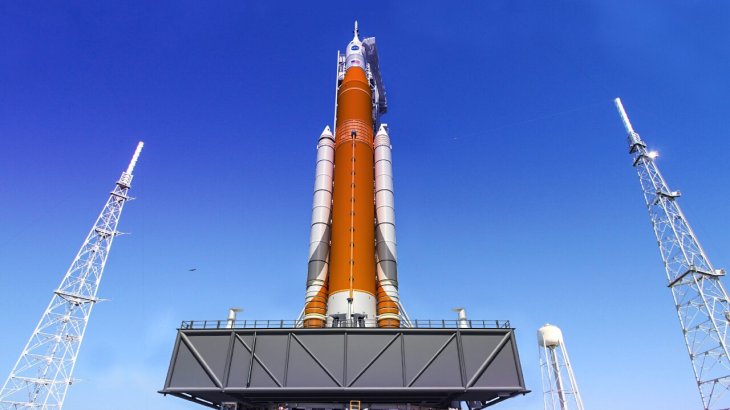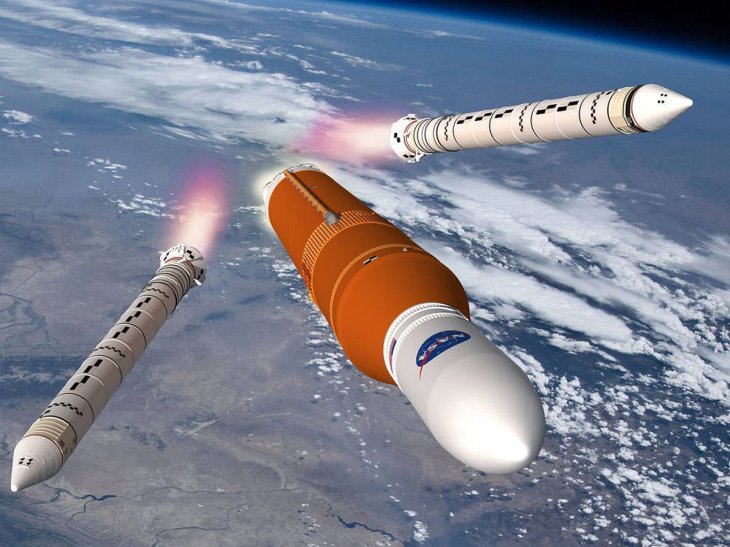NASA's Most Powerful Rocket Will Ferry Us To The Moon
Anil Singh - Dec 29, 2019

Rather than facing technical pull-backs, NASA had to delay this rocket project due to financial problems.
- Russia Will Build A Lunar Space Station With China Because It's Done With NASA
- NASA Reveals 20 Most Stunning Earth Images Taken From The ISS
- Indian-Origin NASA Researcher Discovers Jupiter Moon Europa Glows In The Dark
Had been delayed for a couple of years, the Space Launch System of NASA - shortened as SLS - finally came out of the darkness. With the help of this system, the American space agency aims to ferry their crews to the Moon in 2024's missions.

Earlier this month, NASA spokesperson Jim Bridenstine was quoted as saying that SLS is the most powerful rocket that NASA has ever built. The NASA administrator also posted a Twitter video to show how NASA tested the SLS, specifically its enormous fuel tank full of hydrogen liquid. As per a statement from NASA, it's designed to bear over 200% of expected flight loads during nearly 5 hours before engineers found out a buckling point.
The tank will act as a core part of not only in SLS but also in a bunch of upcoming missions to the Moon with its Artemis cargo. To be specific, only SLS is capable of carrying a special NASA spacecraft built for deep-space traveling, codenamed Orion. It'll also pack both astronauts and supplies when traveling to the lunar in no more than one go.

Rather than facing technical pull-backs, NASA had to delay this project due to financial problems, considering that the development budget could exceed a total of $17 billion. Initially, the space agency intended to launch the first test this year. Mike Nichols, the lead engineer of this test, once said about its critical role and emphasized how risky it could be.
With all that said, NASA aims to foster the overall safety and efficiency when developing its "largest-ever" rocket in accordance with the evolvement of future missions. It's now more evident to think of the day we put our footprints on the Moon.
Featured Stories

Features - Jul 01, 2025
What Are The Fastest Passenger Vehicles Ever Created?

Features - Jun 25, 2025
Japan Hydrogen Breakthrough: Scientists Crack the Clean Energy Code with...

ICT News - Jun 25, 2025
AI Intimidation Tactics: CEOs Turn Flawed Technology Into Employee Fear Machine

Review - Jun 25, 2025
Windows 11 Problems: Is Microsoft's "Best" OS Actually Getting Worse?

Features - Jun 22, 2025
Telegram Founder Pavel Durov Plans to Split $14 Billion Fortune Among 106 Children

ICT News - Jun 22, 2025
Neuralink Telepathy Chip Enables Quadriplegic Rob Greiner to Control Games with...

Features - Jun 21, 2025
This Over $100 Bottle Has Nothing But Fresh Air Inside

Features - Jun 18, 2025
Best Mobile VPN Apps for Gaming 2025: Complete Guide

Features - Jun 18, 2025
A Math Formula Tells Us How Long Everything Will Live

Features - Jun 16, 2025
Comments
Sort by Newest | Popular